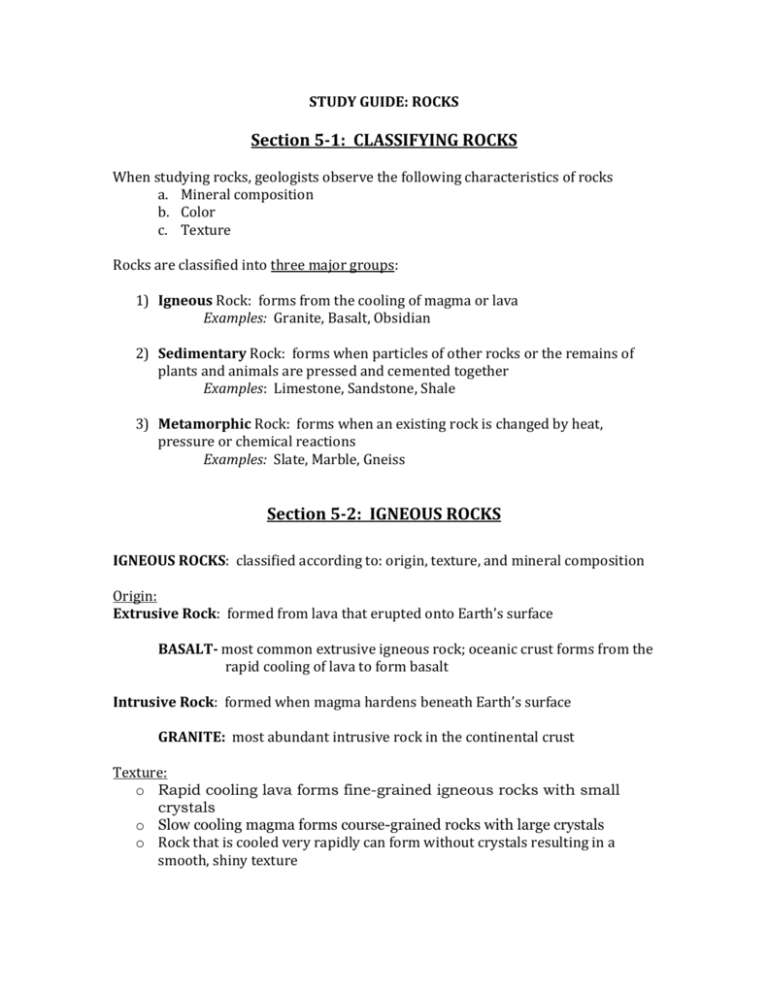Section 5-2: IGNEOUS ROCKS
advertisement

STUDY GUIDE: ROCKS Section 5-1: CLASSIFYING ROCKS When studying rocks, geologists observe the following characteristics of rocks a. Mineral composition b. Color c. Texture Rocks are classified into three major groups: 1) Igneous Rock: forms from the cooling of magma or lava Examples: Granite, Basalt, Obsidian 2) Sedimentary Rock: forms when particles of other rocks or the remains of plants and animals are pressed and cemented together Examples: Limestone, Sandstone, Shale 3) Metamorphic Rock: forms when an existing rock is changed by heat, pressure or chemical reactions Examples: Slate, Marble, Gneiss Section 5-2: IGNEOUS ROCKS IGNEOUS ROCKS: classified according to: origin, texture, and mineral composition Origin: Extrusive Rock: formed from lava that erupted onto Earth’s surface BASALT- most common extrusive igneous rock; oceanic crust forms from the rapid cooling of lava to form basalt Intrusive Rock: formed when magma hardens beneath Earth’s surface GRANITE: most abundant intrusive rock in the continental crust Texture: o Rapid cooling lava forms fine-grained igneous rocks with small crystals o Slow cooling magma forms course-grained rocks with large crystals o Rock that is cooled very rapidly can form without crystals resulting in a smooth, shiny texture Section 5-3: SEDIMENTARY ROCKS SEDIMENT: small, solid pieces of material that come from rocks or living things Most sedimentary rocks are formed through a series of processes: a) Erosion: running water, wind, or ice loosen and carry away fragments of rock b) Deposition: the process by which sediment settles out of the water or wind carrying it c) Compaction: the process that presses sediments together d) Cementation: the process in which dissolved minerals crystallize and glue particles of sediment together EROSION DEPOSITION COMPACTION CEMENTATION (See Figure 9 on page 153 in Inside Earth for a picture of how sedimentary rock forms) Types of Sedimentary Rock: 1) Clastic Rocks- sedimentary rock that forms when rock fragments are squeezed together 2) Organic Rocks- forms where the remains of plants and animals are deposited in thick layers 3) Chemical Rocks- form when minerals dissolved in a solution crystallize Section 5-5: METAMORPHIC ROCKS Heat and pressure deep beneath Earth’s surface can change any rock into metamorphic rock. **Look at the chart on page 165 in the text (The Rock Cycle). Mr. Walker also gave you a copy of this chart. You don’t need to memorize this chart, but you do need to be able to look at it and say what’s going on in the Rock Cycle while looking at it.








